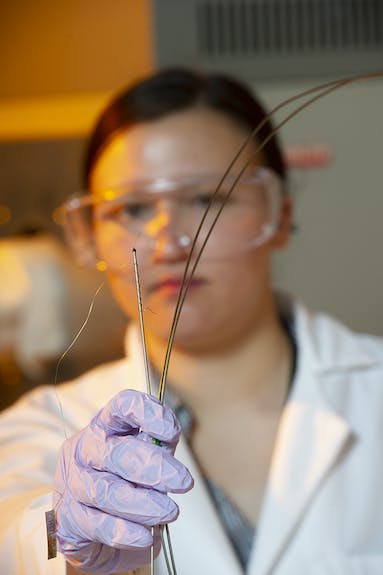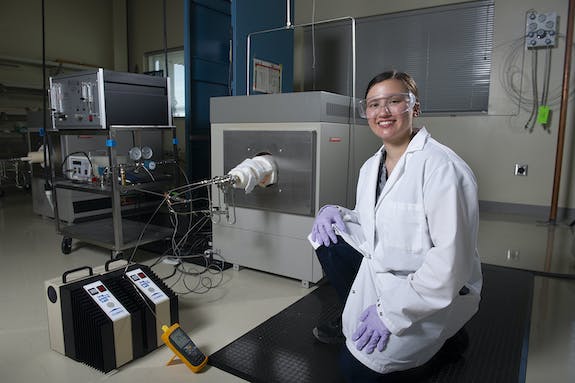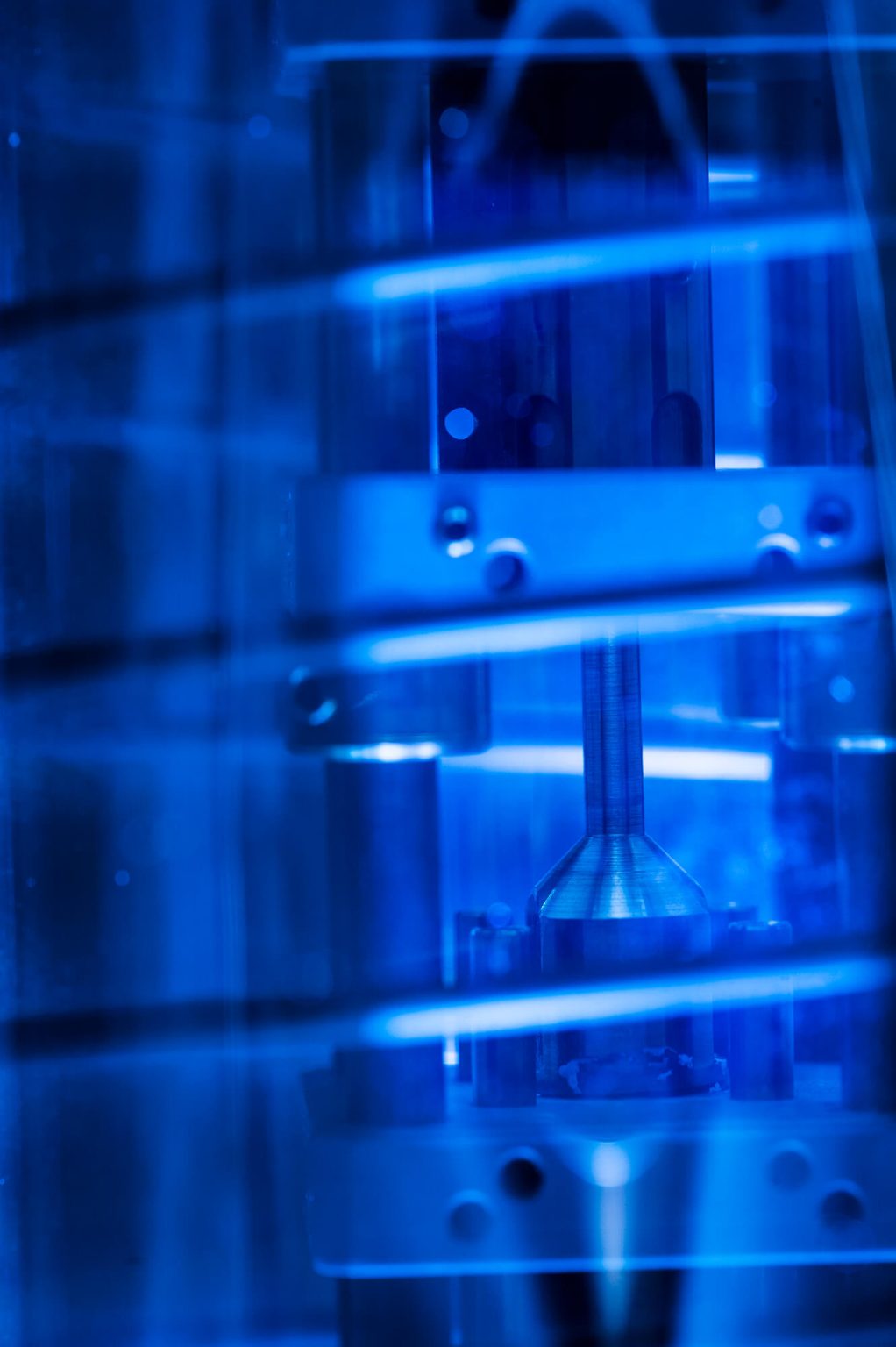Ember Sikorski has always been comfortable with learning as a shared endeavor, one reason she enjoyed her summer internship at Idaho National Laboratory.
A doctoral candidate in materials science at Boise State University, Sikorski, 23, came to INL eager to learn more about computational modeling. What she didn’t know was that actual experiments in INL’s High Temperature Test Laboratory would broaden her scope considerably.
“I had a basic idea of how a thermocouple works,” she said. “Now I really understand what I’m modeling. You can only understand so much from reading papers.”
With the split focus, Sikorski had two mentors: Dr. Larry Aagesen on the computational modeling side, and Dr. Richard Skifton in the HTTL.

“The best thing is she has come from the modeling side,” Skifton said. “This internship has given her hands-on experience. You always get pretty pictures in computational models – nice smooth curves – but anything can happen, and the experiment helps us solidify what’s happening in real life.”
There are 230 research reactors worldwide used to characterize nuclear materials. To get real-time data on material temperatures, sensors must be able to withstand the high temperature and irradiation environment. This has led to the development of High Temperature Irradiation Resistant Thermocouples (HTIR-TCs).
To make an HTIR-TC, two ultra-thin wires (.25 mm) of different materials must be strung through a long tube in such a way that they don’t touch each other except at one end. Tiny insulators must be put on every two inches to keep the wires separate. (“It’s a lot like Indian beadwork,” Skifton said.) When the two wires (molybdenum and niobium in this case) are inserted into any temperature difference (i.e., a furnace), they produce a voltage proportional to that temperature difference. This is called the Seebeck effect.
Using INL’s Multiphysics Object-Oriented Simulation Environment (MOOSE), Sikorski modeled grain evolution and material fracture. High temperature causes grain growth in a thermocouple as the materials try to reduce their energy. This leads to drift in performance and decreases the thermocouple’s ductility (its ability to be stretched or endure stress). To get the best performance from sensors, data on grain growth and stress concentrations are necessary.
With the modeling completed, Sikorski turned her attention to processing (heat treatment), then performance (voltage measurement). On her poster at the Aug. 9 INL Intern Expo, she offered this observation:
Collaboration between experiment and computation can accelerate the development of materials. Experimental results can be used as input parameters for computation to improve the model’s accuracy. The model can then be used to screen a variety of variables to predict what will yield the best performance, reducing experimental time and cost.

Between modeling and experimentation, the door swings both ways, Sikorski said. With the modeling work that she has done at BSU involving uranium nitride, experimenters will frequently call her with results and ask her to look at models to explain what’s happening. With the thermocouple work, however, the experimental results feed into the model so it can compute with greater accuracy.
The work in the HTTL is aimed at helping research into accident-tolerant fuels, an effort sponsored by the U.S. Department of Energy to create fuels that can keep functioning in extreme circumstances and perform more efficiently day to day. The plan is to have new fuels tested and in commercial nuclear reactors by the early to mid-2020s. Live in-pile testing requires durable sensors to produce accurate results, all of which will bring greater safety and efficiency to nuclear materials.
Growing up in El Paso, Texas, Sikorski’s first interest in science grew out of an assignment she was given on debate team in high school. The topic was alternative energy vs. fossil fuels, and she was assigned to argue in favor of alternative energy.
“I noticed that nuclear had made the greatest contribution,” she said. “The more I studied it, the more I identified with it.”
As she dug deeper into science, pursuing an associate’s degree at El Paso Community College and later a bachelor’s degree through the University of Texas at El Paso, her biggest challenge was “getting past the idea that my peers were so much smarter than me,” she said. Things got better after she joined the Society of Physics Students, developing a network of friends who could help her with assignments and grasp concepts.
In 2015, Sikorski was one of UTEP Space Miners, students selected to be part of NASA’s Micro-g NExT program, which challenged them to work in teams to design and build prototypes of tools to be used by astronauts during spacewalk training. Sikorski’s team developed a “float sample grabber” to collect rock samples from an asteroid’s surface.
“When you do things within your school, you know how you stack up among your peers, but to compete on a national level demonstrates our competency against other big name schools such as Yale, Purdue and Boise State,” she said.
She was attracted to BSU’s Micron School of Materials Science and Engineering because of its reputation, but she had never heard of INL until her mentor, Dr. Lan (Samantha) Li, advised her of the internship opportunity.







